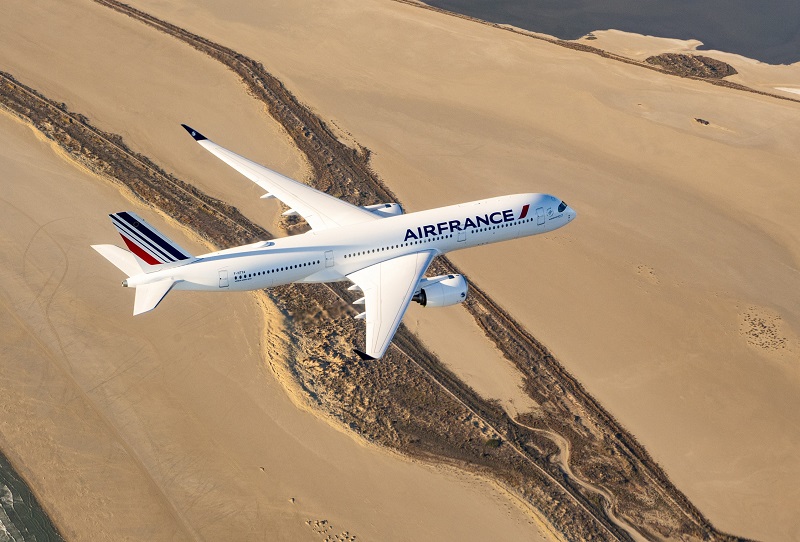What do you do with an A350 intended for a subsidiary airline that no longer exists?
Air France had to answer that question with its first A350-900, which arrived this week from Airbus.
This is the first of 28 A350-900s Air France has on order, which will be delivered by 2025, and appropriately enough it’s named Toulouse.
But these aircraft were never supposed to go to Air France: they were for the airline’s former subsidiary Joon, which Air France-KLM chief executive officer Benjamin Smith reabsorbed into mainline Air France earlier this year.
READ: British Airways adds Asia-Pacific options with Malaysia codeshare.
Six of the A350s were destined for the sort-of-low-cost, sort-of-flying-test-lab, sort-of-nobody-knew, not-a-rooftop-bar Joon, the subject of much mockery as it lacked strategic direction.
It’s not clear whether the onboard product — including a new business class seat — will continue onto later A350s.
But for now at least, business-class features Optima from Safran Seats, the former Zodiac Aerospace.
Optima is the base product for United’s Polaris, although the latter is a highly customized version both in terms of shapes and in terms of look and feel.

This is one of the new compact, staggered business class generation of seats and improves on existing staggered products by angling away from the passenger immediately adjacent to the aisle in order to add privacy and reduce the amount of brush past disturbance.
This is a new seat for the airline and something of an upgrade for Air France, where the last set of cabins (for the A330 refit) were in a very tight 2-2-2 layout, using the Stelia Equinox derivative Elysium
Elsewhere, it uses Safran’s Cirrus in the latest cabins on its Boeing 777 and 787 widebodies.
In all, the cabin looks and feels very Air France: there’s a lot of cool-white and off-white thermoplastic, dark blue and grey for the secondary colors, and a new sort of golden beige for accents like the over shoulder third seatbelt point and the opening tab of the side storage locker.
The overall effect feels industrial-chic, if leaning a bit too much towards the ‘industrial’ side of that for my liking.
I have to say that I miss the subtle red accents from the 787 cabin (with Safran’s Cirrus seats); here it’s just the logo ribbon, and it feels like it could easily have been the gold-beige accents and perhaps some more too.
I do like the multicolored curtain, which pops in the middle with a lighter blue rather than the boring usual navy.
Further back, premium economy is in the increasingly common 2-4-2 layout for the A350, and comes from German seat maker Recaro. There’s nothing exciting here apart from a very light blue cover that one hopes has some industrial-strength stain repellent on it.

Economy, meanwhile, is also from Safran, in the 3-3-3 configuration that all but the lowest of low-cost carriers have taken.
Air France will initially operate its A350 on a triangle route from Paris Charles de Gaulle to Bamako in Mali and Abidjan in the Ivory Coast — both of which are some six hours from Paris — from 7 October through 8 December.
This route is particularly useful for crew familiarisation given the extra takeoff and landing on the 496nm short hop between the two West African cities.
From 27 October (one assumes the arrival date for A350 number two, named Bordeaux) will head to Toronto, while the West African aircraft seem set to swap to Cairo and Seoul from December 9th, returning to Abidjan and Bamako from February. Bangkok is added from next summer.
And that’s a rather odd set of routes: one would assume that Seoul, particularly given the connectivity from partner Korean Air, would have higher demand. Ditto Toronto given the Francophonie links between France and Canada.
This also feels like too nice an aircraft to serve Bangkok summer traffic, which isn’t exactly high-yielding.
So it’ll be fascinating to watch how the aircraft performs, if it changes routes, and how Air France integrates this ex-Joon configuration into its increasingly diverse long-haul fleet.
























